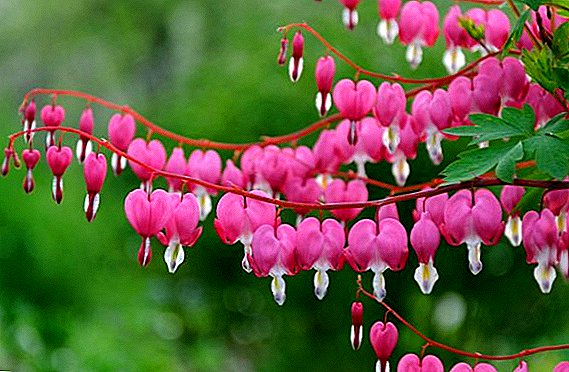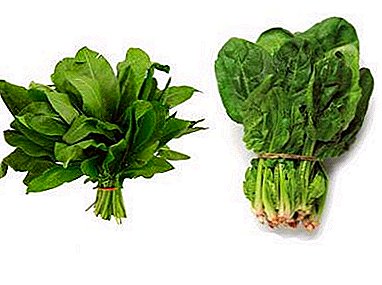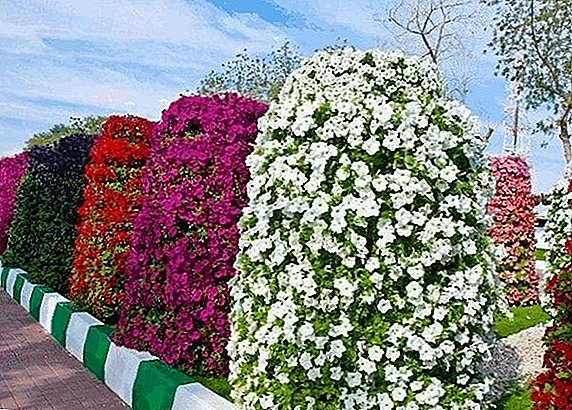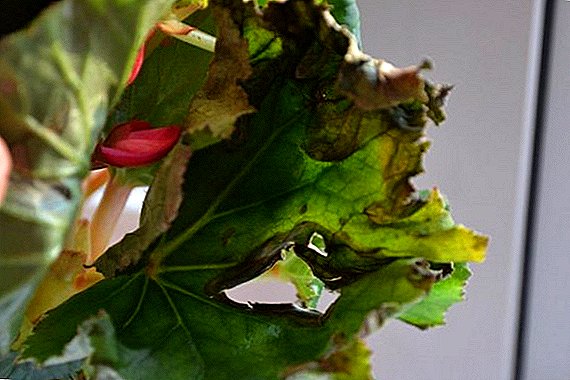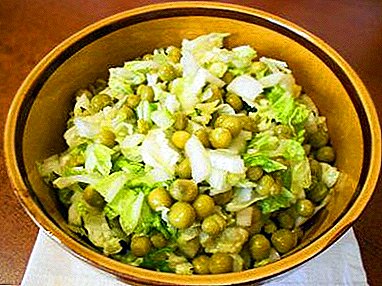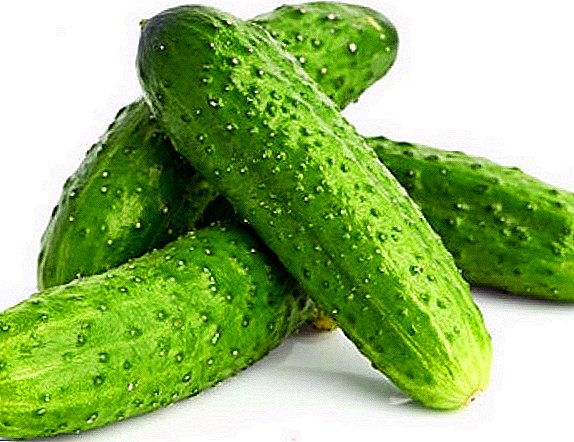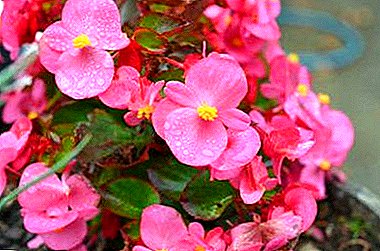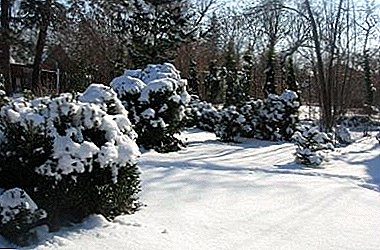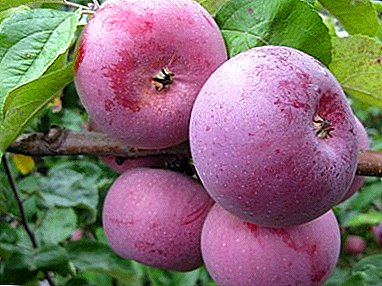
Saplings of Belarusian varieties of apples are rarely on sale, but if you meet, buy them, they are excellent for growing in our middle lane.
Apple tree Belarusian raspberry - ruddy apple with a beautiful name, and a special wax coating adds to its special charm.
The taste that only gets better over time will not disappoint, but These apples can be stored until the end of spring!
What kind is it?
 Refers to late winter varieties.
Refers to late winter varieties.
Belarusian raspberry apple zoned in Republic of Belarus, but thanks to its frost resistance, it has long been successfully grown far beyond its borders.
Aphrodite, Aromatny, Winter Beauty, Aport and Antonovka ordinary belong to the winter varieties.
Pollination
To efficiently pollinate and get a good harvest, apple trees are planted at a distance no more than 50 meters from each other.
The best pollinators for this variety are:Antonovka dessert, Welsey, Lovefam, Minsk.
In addition, for cross-pollination at the site, it is desirable to have at least three mutually-pollinated varieties.
Variety description
Consider separately the appearance of the apple and its fruit.
Apple trees medium height (up to 5 m) with a rounded crown. Uterine branches are grayish-brown, vertical growth direction. The shoots are distinguished by a dark cherry color, articulated, well-pubescent.
The color of the leaves is dark green, brilliant. Blade large, leathery, ovoid. The tip of the leaf is twisted, the base is heart-shaped or rounded.
 The leaves are strongly curved along the central vein in the area of the base and are somewhat lower in relation to the shoot, and on the upper parts of the shoots they are folded along the line of the central vein.
The leaves are strongly curved along the central vein in the area of the base and are somewhat lower in relation to the shoot, and on the upper parts of the shoots they are folded along the line of the central vein.
The edges of the leaves are raised, wavy, codulate in shape with smooth teeth.
Leaf stalks have a cherry tinge. Petioles are thick, short, depart at angles greater than 45º, and in the lower parts of the shoots form a 90º angle with them. The buds are small, oval, pressed.
Annual seedlings are tall, pubescent, with a thickened trunk brownish-cherry color. They have three or four strongly developed branches with a small number of lecheviches.
Apples large (weight 100-150 g) rounded or flat-rounded. Fruits have implicit ribbing. The saucer is narrow, small, with grooves.
The funnel is also shallow, narrow, greenish, in some cases orzhavlennaya. Sepals are small, closed, sometimes the cup is half open.
The short and thick peduncle has a thickening at the end and usually does not extend beyond the funnel plane.
The main color of the fruit is light green. The topcoat has a characteristic appearance of crimson stripes merging into one continuous blush, which gave the variety its name.
 On apples, a waxy bluish bloom is well visible. Podchashechnaya tube has a conical shape, enters the heart.
On apples, a waxy bluish bloom is well visible. Podchashechnaya tube has a conical shape, enters the heart.
A small heart in the shape of an onion is located in the upper part of the fruit.
Seed chambers are small, can be both closed and slightly open in the axial cavity, with dark brown seeds.
In ripe fruits, the pulp has a white color with a cream shade, medium density, juicy.
Taste of apples very sweet, sweet and sourimmediately after collecting a little sour, but in the process of laying it becomes excellent.
The following varieties can also boast of great taste: Orlovsky Pioneer, Ekranny, Bolshaya Narodnoe, Orlinka and Aromatny.
A photo









The history of the selection of the Belarusian raspberry
The variety was obtained at the Belarusian Research Institute of Potatoes, Fruits and Vegetables (located in the Minsk region of Belarus) by the breeder G.K. Kovalenko by hybridization Antonovki and Lovefam. Like Antonovka ordinary, it has a high winter hardiness.
Growing region
 Belarusian raspberry is successfully grown in Belarus and the Baltic States.
Belarusian raspberry is successfully grown in Belarus and the Baltic States.
Variety with high winter hardiness and quite skoroplodny.
Suitable for growing in most regions. Central Russia.
In particular, it grows successfully in the Novgorod region.
For planting in these regions are also well suited varieties: Cinnamon New, Asterisk, Melba, Ouspenskoe and Papirovka.
Yield
Fruiting begins already for 2-3 years on the stock 62-396, and on the 4-6th year after planting on seed stocks. Fruits annually, while the years of high yields alternate with moderate.
Productivity is up to 37 kg from a ten year old tree and up to 250 centners per hectare. Fruits ripen by the end of Septemberfirmly on the branches not prone to shedding.
Excellent yield is also demonstrated: Rossoshansky, Sunny, Sokolovsky, Stroyevsky and Wonderful.
Apples are usable from October-Novemberbut the best tastes the fruits get in the process of laying in January-February.
For storage, apples are removed along with the stalk. In no case, do not erase from the fruit wax wax, it will provide additional protection during storage.
Apples should be sorted by size, remove damaged fruit. Then put in wooden boxes and put into a cold cellar or basement.
The best storage temperature about 0 ° C. In such conditions, the Belarusian crimson can be stored until spring or even until the end of May.
Planting and care

Planting an apple-tree Belarusian Malinovaya ”> Planting an apple-tree is done in spring according to the standard scheme. To buy seedlings is best in nurseries at the place of residence. This ensures that the apple tree is adapted to the local climate. The younger the seedling, the better.
It is very good if the tree is dug directly upon purchase: so you can be sure that it was grown in the nursery.
Before transporting the roots, wrap them with moss, a damp cloth or paper and wrap them in plastic wrap to preserve moisture.
If you buy a seedling in a container, inspect it from below and make sure that there are young roots sticking out of it.
For good growth and development of apple trees, planting trees on neutral ones is most favorable. fertilized soils rich in potassium and organic matter. The soil should be sufficiently moist.
The seat for the seedling is prepared in advance. If the soil on the site is suitable, the trees are planted in pits.
On the sandy soils, on the contrary, should prepare a large square hole about 80 cm deep put into it moss to retain moisture and nutrients and cover with fertile land.
 In this case, the planting of apple trees is carried out the next year, with the obligatory introduction of complex mineral fertilizers. Organic fertilizer is also applied to sandy, sandy and podzolic soils during planting - compost or manure.
In this case, the planting of apple trees is carried out the next year, with the obligatory introduction of complex mineral fertilizers. Organic fertilizer is also applied to sandy, sandy and podzolic soils during planting - compost or manure.
Clay, peat, as well as wet areas with groundwater closer than 1 m, are not suitable for apple trees. In these cases, the apple trees are planted on the bulk of the hill.
Landing is done with a peg, which is driven into the center of the landing pit. The distance between the trees in the garden should be not less than 4-6 m. A sapling is applied to a peg, the roots are well straightened and gradually covered with earth.
Mineral fertilizers and fresh manure cannot be applied directly during planting, as they can cause a burn on the plant.
You should not plant a tree too deeply, it impairs its growth and may even lead to death. Root the neck should be 3-5 cm above ground level. High landing can be corrected by filling the ground around the trunk in the form of a mound.
Immediately after planting, the seedling is loosely tied to a peg and watered with 1-2 buckets of water regardless of weather conditions. For irrigation at the edges of the pit make the hole. After the soil subsides, the tree is tied up carefully, preferably with the help of three pegs.
Apple trees, especially in the early years of development, need to ensure regular watering. To retain moisture, the soil is mulched with sawdust, bark, manure or black film.
In spring, apple trunks are whitened for the prevention of sunburn.

To obtain a good harvest regularly pruning trees.
During spring pruning, dry branches are removed. It is undesirable to severely injure the tree during this period, since the outflow of sap can cause the branches to dry out. Crown formation is best done in the fall.
To this end, perform shortening and thinning of branches. Remove dry branches; shoots that interfere with each other; get rid of thickened parts of the crown.
The general rule when pruning: remove competing with the central trunk, vertically growing branches, leaving horizontal. Slices cover with garden pitch.
Excessive pruning is undesirable, as it leads to the rapid growth of young shoots.
Diseases and pests
Apple trees are rot resistant, moderately resistant to scab and powdery mildew.
With proper garden planning with sufficient distance between trees, scab can be avoided. Also It is important not to thicken the crown.
If the disease still appeared, it is necessary to take measures immediately, first of all, to remove and burn sick leaves.
For the prevention and treatment of scab used special drugs. One of the best are "Healthy Garden", "Charm", "Zircon".
 These are biological products of a new generation, harmless to humans, which increase the resistance of plants not only to scab, but also to powdery mildew, and also protect them from pests.
These are biological products of a new generation, harmless to humans, which increase the resistance of plants not only to scab, but also to powdery mildew, and also protect them from pests.
It is not recommended to use potent poisons and chemotherapy drugs., many of which are prohibited for use near housing, including garden plots.
Do not neglect preventive measures against garden pests. The attack of such ones as the miner moth, hawthorn, fruit sapwood, apple moth can cause significant damage to your crop.
Belarusian apple varieties are characterized by high frost resistance and high yield, suitable for growing in central Russia.
The undoubted advantages of Belarussian raspberry apples are good taste, excellent quality of fruit, as well as an attractive appearance. Low susceptibility to scab avoids over-treatment with chemotherapy.
Watch a video about spring spraying of apple trees.


